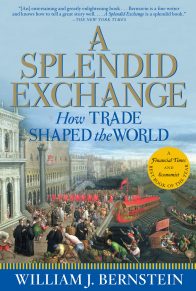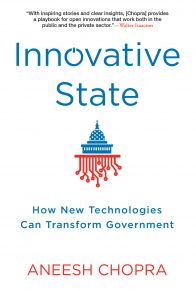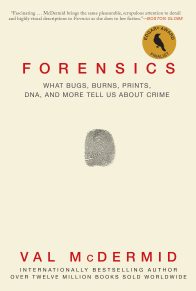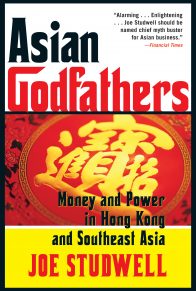How many times had he already told this story? Jim listened to the ringing on the wire, knowing this could be one of the most important calls he had ever made, and his mind raced ahead to its possible outcome. Phillips & Cohen had just the kind of experience his case had needed from the start. But was the theft too complicated to explain in a single call? And was the case too shopworn to be attractive to yet another firm? Jim’s other attorneys had spent several hundred thousand dollars in time and out-of-pocket expenses, but there was still no hint of a commitment from the government. Phillips & Cohen would be the third law firm on a case that had dragged on for two years and still gone nowhere.
To his immense relief, the call went well.
After talking with Peter Chatfield, an attorney in the firm’s Washington office, Jim explained the case in even greater detail in a conference call with Chatfield and Stephen Meagher, a former federal prosecutor who had opened the Phillips & Cohen San Francisco office the previous year along with another former assistant U.S. attorney, Eric Havian. Neither Chatfield nor Meagher seemed put off by anything Jim told them, including his contract with the other lawyers, the government’s reaction to the lawsuit, or even the length of time the case had remained under seal. They were businesslike and, for most of the conversation, carefully neutral. They asked the kinds of questions that showed an understanding of the issues, and Jim sensed that the story had piqued their interest. In contrast to the government attorneys, who continued to treat his case like a hot potato, both Meagher and Chatfield actually seemed willing to take hold of it, to turn it over and examine it for its potential. Near the end of the call, Jim sensed that the tone of the conversation had begun to shift, if only slightly, to one of cautious enthusiasm. If Jim came down to San Francisco, Meagher said, he would ask two of his partners to come in from Washington to hear his story.
It was the best outcome he could have hoped for, even if it put him right back in the middle of a familiar dilemma. This was the leading firm in False Claims Act litigation. If Phillips & Cohen didn’t have any interest in his case it wouldn’t have invited him out, and it certainly wouldn’t be bringing in people from Washington. Excited, and without a moment’s hesitation, he agreed on a date for the meeting. But once more, he had to pay his own way. He could barely afford the cost of the plane ticket and a motel.
The afternoon before the appointment, he packed a heavy briefcase with the evidence he and his lawyers had culled that long, sad weekend when his mother died. He carefully folded his best suit and tie into an overnight bag. He knew that the protocol for travel was a lot more casual than for a business meeting, so he chose a paisley shirt and brown pants for the plane ride.
At eight o’clock the next morning in San Francisco, when he came out of the shower and went to his bag, he realized in a near panic that he hadn’t packed a dress shirt. He rushed from the hotel wearing the same combination he’d worn on the airplane. There was a clothing store just down the street, but the next shock was the sign on its door: It didn’t open until nine-thirty. The interview was at ten; it would be tight, but still possible. He waited by the door, and as soon as he got inside he bolted for the menswear department. The cheapest white shirt in the store was $45; there probably wasn’t a shirt costing that much in the entire state of Montana, but he had no time left to find a better choice. Back in his room, he struggled out of his travel clothes, at the same time pulling out the pins and unfolding his purchase with a combination of resentment and relief. A few minutes later, on the dot of ten, he arrived at the offices of Phillips & Cohen. His heart was racing.
The two partners from Washington who joined Meagher and Havian for the meeting turned out to be the firm’s founders, John Phillips and Mary Louise Cohen. Jim started by telling them frankly that the firm was essentially his last hope. Despite what he considered powerful evidence, the Justice Department seemed to doubt whether it would be possible to prove a case of fraud against Quorum or HCA. He then proceeded as methodically as possible to build just such a case, an accountant creating a picture with numbers, systematic in his presentation and careful with his conclusions. But it wasn’t like a business presentation where he had someone else to help with the exhibits or where he could hand off complicated explanations to others. The entire responsibility was his alone–to make the pitch, to back up his claims, to explain and prove the crime.
There was nothing particularly enthusiastic about the response he got from his audience, but neither was it adversarial. The four attorneys were interested and cordial, and they asked every conceivable question relating to what Jim regarded as the case’s strengths and weaknesses. Why hadn’t anything happened in the past three years? What did he feel about the case now that he had put so much into it? Where did he stand with the prior lawyers? How was his family holding up? How did he view the role of the Justice Department? If it continued to drag on, was he willing to go the distance?
John Phillips told him he was impressed by Jim’s tenacity, and by the job he had done in extracting the essence of the case from the cost reports. Jim had told his story with clarity and precision, and in a whistle-blower suit, the ability to explain a complex fraud was a major virtue. Phillips was equally open about his misgivings. The case would require an enormous investment. Alderson’s case involved hundreds of hospitals and thousands of cost-report claims; it would take a lot of work to substantiate and prove the false claims. And HCA had recently merged with Columbia Hospital Corp. to form Columbia/HCA Healthcare Corp., the largest for-profit hospital chain in the country. The merged company had very deep pockets and would certainly fight any challenge. In addition, the Justice Department had apparently formed a negative impression of the case and was on the brink of declining to intervene. Changing that opinion would be very difficult, but was essential, because the Justice Department would be a critical factor in the outcome.
Phillips explained why the analysis Alderson and his attorneys had done to date was useful, but was still a long way from meeting the requirements for making a successful case. The false claims involved tens of thousands of dishonest cost reports by hundreds of hospitals over the course of a decade. The pattern of the fraud was diffuse, and one of the biggest challenges would be to clarify how Quorum and HCA had systematically taken advantage of discrete mechanisms in the Medicare structure to steal the money. It added to the complexity of the case that Phillips & Cohen would have to negotiate an arrangement with the lawyers in Kansas City if it was to proceed on his behalf. None of this was news to Jim, but it was still something of a letdown that he would be leaving San Francisco without a clear sense of whether the firm was willing to take him on. All the lawyers said at parting was “We’ll get back to you.”
Later, Jim tried to evaluate how the meeting had gone. He told Connie he had been impressed, but had no way of telling how the attorneys were going to weigh the pluses and minuses they had discussed in the interview. Then he told her the story of the shirt, and how sick he had felt about spending all that money. Later, when Connie brought in his laundry, she told him the new one didn’t iron right and didn’t drape properly on the hanger. She said he had far better shirts that had cost less than half as much. They both shook their heads. Each of them wondered whether the trip would turn out to have been worth it.
A few days later, Stephen Meagher called to tell him Phillips & Cohen had decided to take the case. The attorneys had looked through the documents he had left with them, and it was clear that Quorum and HCA knew from the outset exactly what they were doing. Another strong plus, Meagher said, was Jim himself–he was a good, solid relator with strong credentials. Meagher offered to contact the Kansas City law firm to work out a fair arrangement to compensate it if the case succeeded.
Jim was as relieved by this offer as he had been to hear Phillips & Cohen was taking him on as a client. Changing firms had been one of the toughest decisions of his life. Even though the bird on his shoulder had told him it was the right move, he had enormous respect for the other attorneys and wanted to be certain they received a reward in fair proportion to what they had done. Meagher reached an agreement in which the prior attorneys would recover their expenses and retain a share of the relator’s reward. All of this was contingent, as was the original agreement, on a successful outcome. Phillips & Cohen formally took over that November.
By that time, Jim had changed his job again. During the summer, after nearly five years in Dillon, he had taken a position with a Catholic hospital on the other side of the state. He and Connie moved to Miles City, a horse and cattle town of ten thousand people some four hundred miles to the east, in Custer County on the banks of the Yellowstone River. By then Jim had begun to feel that his real job was the lawsuit.
In February 1996, Jim flew to Washington for another meeting with the Justice Department. If he approached that event with any hopes that the experience and prestige of his new attorneys might make a difference in how his case was viewed by the government, Marie O’Connell saw to it that they were short-lived. Greeting Jim with her usual coolness, she told him that she and her colleagues were very surprised that Phillips & Cohen had been willing to become involved. She was equally to the point with Meagher, Havian, and Chatfield. It was very unlikely, she told them, that the Justice Department would agree to join in Jim Alderson’s action.
The meeting also included auditors from the Health and Human Services’ Office of Inspector General, officials of HCFA, and a government-hired expert named Pete Figliozzi. Meagher and Chatfield had experience in measuring the mood of this kind of a gathering, and it was apparent to both of them that with the exception of Figliozzi, the atmosphere was one of extreme skepticism. The other officials seemed as determined as O’Connell to convince them that the case was too difficult to pursue on the grand scale Alderson believed it warranted. One OIG auditor told them, “We’ve been looking into this case for three years. You have no idea what you’re talking about.” A Justice attorney added, “The case is too diffuse. You need to find a common type of fraud from hospital to hospital.”
On the latter comment, Alderson’s attorneys were more or less willing to concede the point. Unless the case could be organized into unifying themes of fraud, it would be extremely difficult to understand, pursue, and prove.
An OIG auditor rolled her eyes when Meagher and Chatfield suggested that the government audit HCA hospitals. “Audits are too expensive and take too long,” she objected. “Besides, you can’t use the results of an audit at one hospital to prove that another hospital engaged in the same type of fraud.”
The OIG auditors even dismissed the document stamps instructing employees to not show them to Medicare auditors. “Only ten percent of the documents were stamped with that,” one of them responded.
The one exception in the group was Figliozzi. When a Justice Department attorney argued that it was unclear HCA knew that it was defrauding Medicare, the government’s expert muttered under his breath, “They knew.” A moment later the same lawyer said it was unclear to the Justice Department as well whether HCA had indeed committed fraud. Figliozzi said, again sotto voce, “It’s fraud.”
Figliozzi’s sentiments notwithstanding, Alderson’s lawyers emerged from the meeting feeling discouraged. The meeting had given them a clear understanding of how hard it would be to get the government behind the case. Still, the meeting did suggest a strategy for persuading the government to join it. Clearly, Justice would be interested in pursuing the case only if Phillips & Cohen could show that each of the HCA and Quorum hospitals had followed the same pattern when they’d cheated Medicare. That kind of pattern had been demonstrated in other Medicare fraud cases. In the medical testing labs case brought by Jack Dowden, for instance, the labs routinely added the same unnecessary tests and billed Medicare the same amount. In the HCA and Quorum cases, however, each hospital made different false claims for reimbursement on its cost reports. In the absence of a revealed pattern, the complexity of the case and the amount of resources that would be required to pursue it made it unlikely that Justice would join the lawsuit.
Meagher and Chatfield weren’t the only ones who knew this. The Justice Department attorneys were also talking about the case with their counterparts for the defense. The HCA attorneys were quick to pick up the chorus, insisting the company had done nothing wrong, and signaling that they were prepared to spend whatever resources were necessary to discourage the government from pursuing the case.
Even before the meeting, Alderson’s new attorneys had been aware of the government’s attitude toward the case, but they were also puzzled by it. They had at least as good a perspective on the evidence as Marie O’Connell did, and it was obvious to them that the potential recovery was vastly higher than what the government apparently thought.
One thing O’Connell did have that they did not was a detailed, $300,000 analysis by government experts of Quorum’s and Columbia’s cost-report claims. But when Meagher asked O’Connell to provide this analysis to the firm, she refused. She said she had reviewed it, that it was full of gray areas and subtleties, and that it contained nothing of substance that would help Jim prove anything. Later, she would characterize his lawsuit as “a dog of a case.”
After the meeting, Meagher shared with Jim his theory on why the suit had stayed so long in limbo and what to expect on the road ahead. Plain and simple, he told him, the Justice Department was reluctant to take a cost-reporting case. The department’s client, the Health Care Financing Administration, which administered the Medicare program, was likely to be embarrassed that the program was susceptible to such widespread abuse. In addition, the applicable regulations could be portrayed as too complex and too convoluted and the gray areas too numerous. The Medicare program might also be embarrassed by the ineffectiveness of its audit review process for cost reports. Not only had it failed to uncover these widespread false claims, but it had also failed to realize that these hospitals were essentially keeping two sets of books. Medicare cost reporting was a vast, largely unexplored new territory for law enforcement. The principal players were powerful and well defended, and the Justice Department would be outnumbered and outspent.
The longer the department avoided taking a position, the weaker Jim’s case appeared on its merits. O’Connell appeared to be setting the scene for an eventual rejection, or at least a decision to join only part of Jim’s case. Whether she knew it or not, her ingrained skepticism about the case was also testing the depth of the new attorneys’ commitment.
Phillips & Cohen still wanted to see the reports that Marie O’Connell said formed the basis for the government’s doubts, and the attorneys continued to push to get them. After all, they were all on the same side; having the firm’s experts review the government reports surely couldn’t hurt. A few months later, O’Connell’s boss finally agreed to share the experts’ analyses. Phillips & Cohen received some, but not all, of the requested reports and documents. As the attorneys expected, the “gray areas and subtleties’ cited by O’Connell were few and far between. The analyses clearly showed that a significant portion of the claims were false, and that the companies had known it. Jim Alderson pored over the reports and documents for weeks, analyzing them and looking for ways they could help his case.
When Alderson filed his suit on January 5, 1993, it was his understanding that it would remain under seal for sixty days; he hadn’t particularly noticed the phrase “or more, if necessary.” The first time the Justice Department had asked for an extension, back when he was representing himself, it was for half again as long as the original period–another three months. But it happened again and again, like tides that kept returning to erode his shoreline and push the horizon ever farther into the distance. There were times when he promised himself, “This is absolutely it,” but still the extensions came and went.
Jim talked with his new attorneys about the pressures of not knowing where they were headed, of not being able to share their journey with anyone but one another, and of having to work in secret on what amounted to a second job. All they could tell him in response was what he knew already. If the government declines to join a qui tam lawsuit, the relator can prosecute it on his own, but in this case that would mean taking on a company with billions of dollars in the bank and an almost limitless ability to dodge and stall. It would be a mistake to insist on lifting the seal of secrecy in the hope of forcing the government to take a position, because the most likely reaction to that kind of pressure would be its refusal to join the action. However reluctantly, Jim dutifully agreed to the extensions.
He continued at his day job and, as before, put in a second forty-hour week with his lawyers and their hired experts in the tedious task of analyzing the scope and size of the fraud.
But early in 1996, their efforts received an unexpected boost.
© 2004 by Henry Scammell. Reprinted with permission from Grove Atlantic, Inc. All rights reserved.













